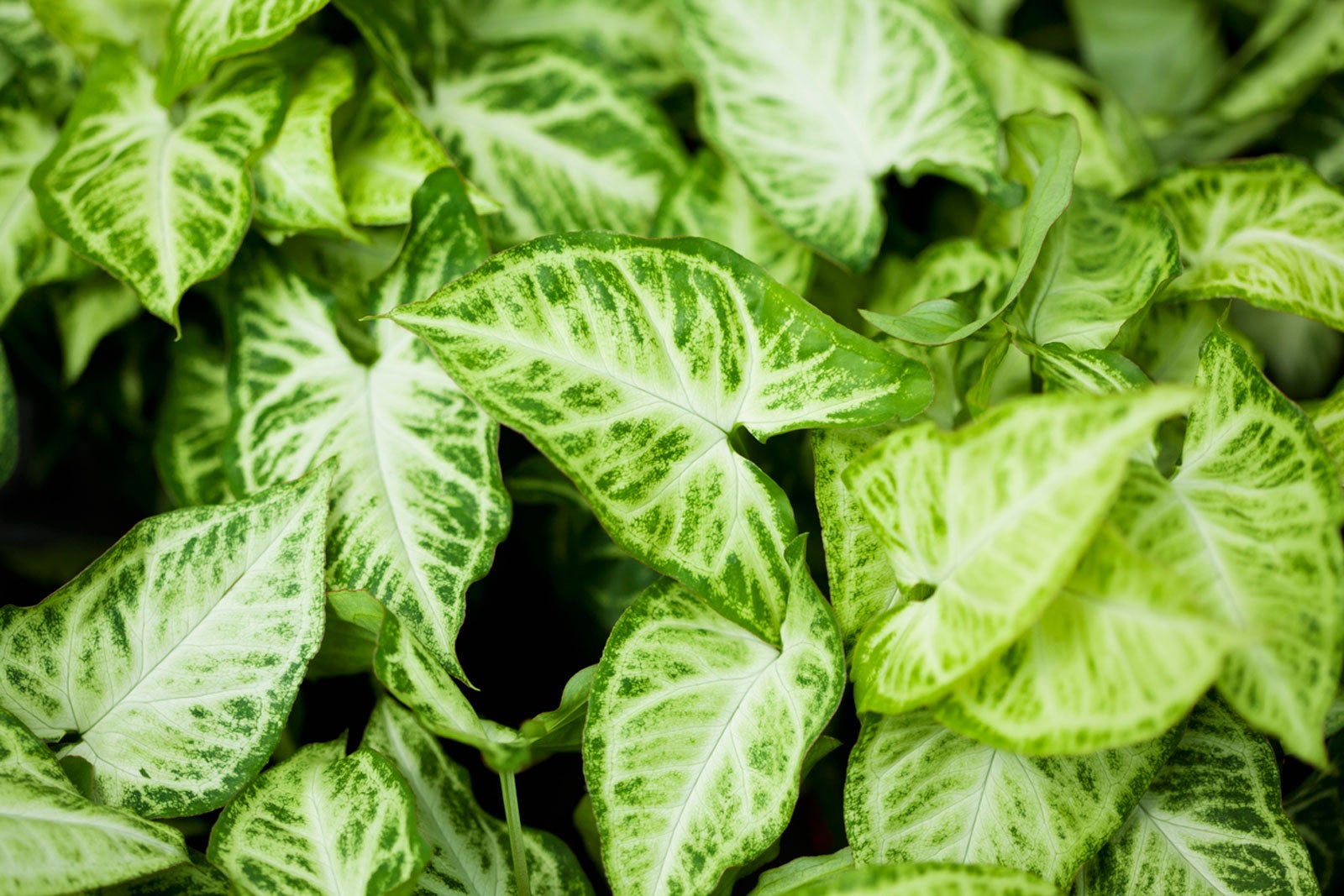Syngonium (Arrowhead Plant): Complete Care & Growing Guide
The lovely arrowhead plant is commonly grown indoors, trailing from baskets or climbing a stake. Versatile and easy-to-grow, it’s great for indirect or low-light locations.

How To Grow And Care For Syngonium (Arrowhead Plant)
Arrowhead plant, Syngonium polophyllum, is also known as arrowhead philodendron, arrowhead vine, and nephthytis. It is a tropical vining plant that can grow as a perennial in the warmest areas of the U.S. Everywhere else, the Syngonium plant makes an excellent indoor specimen.
Quick Facts
Botanical name - Syngonium polophyllum
Height: 3 to 6 feet (0.9 to 1.8 m)
Spread: 1 to 2 feet (0.3 to 0.6 m)
Sun exposure: Partial shade, indirect light
Soil Requirements: Light, well-drained
Hardiness zones: 10 to 12
Sign up for the Gardening Know How newsletter today and receive a free copy of our e-book "How to Grow Delicious Tomatoes".
When to plant; Any time
Arrowhead Plant Care
As with other philodendrons, caring for an arrowhead plant is simple. It is a forgiving plant that thrives even in less-than-ideal conditions.
Light
Outdoors, and in its native range, arrowhead grows in partial shade and dappled sunlight. As a houseplant, provide it with bright but indirect sunlight. Direct sunlight can damage foliage.
Water
Water arrowhead regularly during the growing season, keeping the soil moist but well-drained and not soggy. Reduce watering in winter.
Temperature & Humidity
Unlike many tropical vines, this one will tolerate colder temperatures, down to about 35 degrees Fahrenheit (1.7 Celsius). It prefers humidity, so use a pebble tray to add moisture to the air.
Soil
Any quality potting soil or soilless mix will work for arrowhead plants. It should be a light mix with good drainage.
Fertilizer
Arrowhead vines benefit from a balanced, general houseplant fertilizer. Use a slow-release product a few times a year or use a half-diluted mixture twice a month.
Problems, Pests & Diseases
Pests you might find on your arrowhead include mealybugs, aphids, scale, and spider mites. These plants are susceptible to some bacterial and fungal diseases:
Bacterial blight
Stem rot
Bacterial leaf spot
Myrothecium leaf spot
Avoid these by purchasing healthy plants, ensuring good drainage, avoiding overwatering, and ensuring leaves have adequate air flow and don't get too wet.
How to Plant Syngonium
You can keep arrowhead plants in the containers in which you purchased them and repot as needed, as long as the size is adequate and there is good drainage. When repotting, choose a high-quality, light, and well-draining mix. Arrowhead tolerates being repotted. Just be sure to water it thoroughly after repotting.
Pruning
Arrowhead is a vine but with pruning you can maintain a compact shape. Dont hesitate to trim back your plant, as doing so will only make it grow denser and bushier. If you want a vine, let the stems grow and either provide them with a structure to climb or let them trail.
Arrowhead Plant Propagation
You can easily propagate arrowhead by stem cuttings. Take a cutting just below a node and remove the lower leaves. Place the cut stem in water or moist potting mix. If rooting in potting mix, keep it moist but not soggy until roots appear. If in water, change the water out every few days. You should have enough roots to repot the cutting in about six weeks.
Syngonium Varieties
Syngonium is a popular houseplant. You can find several different varieties with unique foliage:
Cream Allusion. This variety is more compact than others and is a good choice if you do not want to grow vines. The foliage is cream and green with a little bit of pink.
Pink Allusion. Pink Allusion is also compact and has light green leaves with darker edges and pink veining.
Strawberry Cream. This variety's new growth appears in a striking shade of pink. Brighter light produces more pink color.
Holly. Holly has leaves that are mostly white with green edges and some green veining.
Mini Pixie. This is a smaller variety with white and green leaves.
Albo Variegatum. This variety has some of the most striking leaves of all arrowheads. They are dramatically variegated with contrasting dark green and white.
Frequently Asked Questions
What Are the Disadvantages of Arrowhead Plants?
There are very few disadvantages to growing arrowhead plants inside. However, if you live somewhere warm enough to grow outdoors, be aware that they may become invasive. It’s best to grow them in containers.
Can Syngonium Live in Water?
Arrowheads don't actually need soil to grow. Place stem cuttings in water to root and keep them there for a unique houseplant. They will continue to grow roots that you can see through a clear, water-filled container. To keep it healthy and growing, change the water every week or so and use a liquid fertilizer.

Nikki Tilley has been gardening for nearly three decades. The former Senior Editor and Archivist of Gardening Know How, Nikki has also authored six gardening books.

